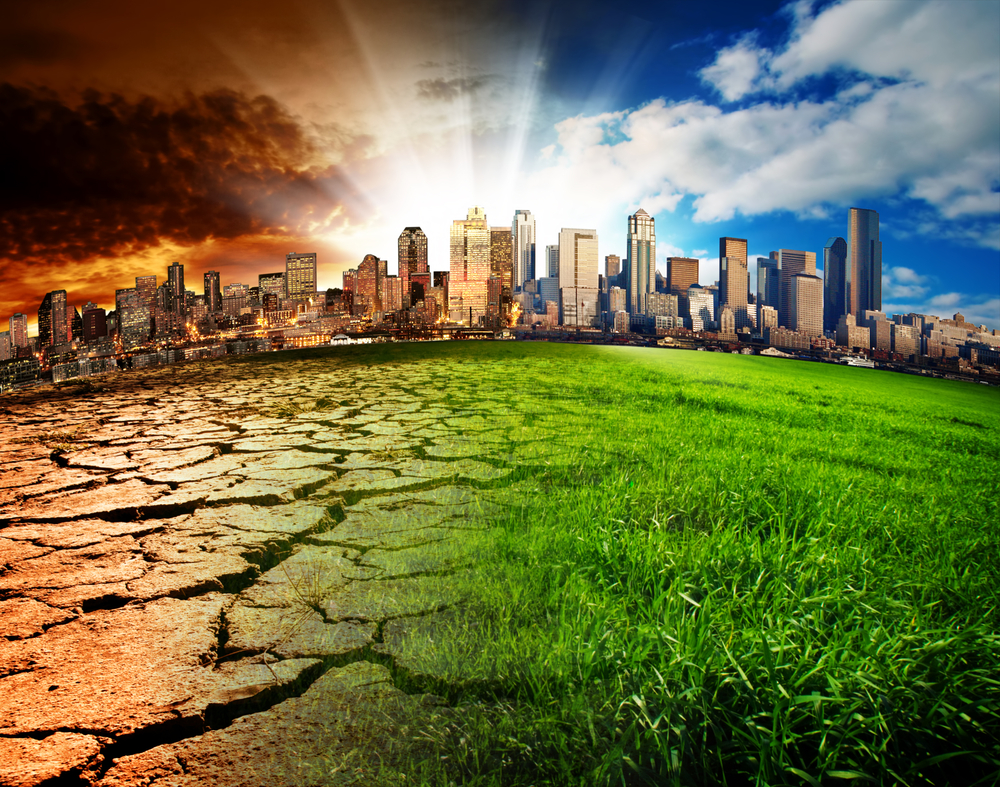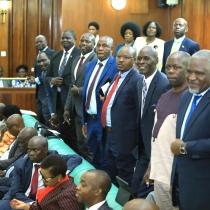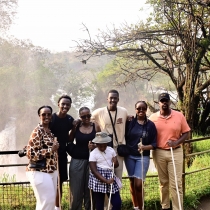
The Global Climate Change Discourse: The Timeline to the UNFCCC
By Denis Yekoyasi Kakembo, Bill Page, John Teira, Dickens Asiimwe Katta, Francis Tumwesige Ateenyi
1. Introduction
Though it is debatable whether enough has so far been done to stem greenhouse gas emissions accounting for the present global warming, it is apparent that the adoption of the United Nations Framework Convention on Climate Change (“UNFCCC”) in 1992 at the Rio Earth Summit in Brazil set the stage for an unprecedented political response that shifted global attention and focuses towards climate change.
While perspectives differ on how to reconcile the different and often competing human needs with the protection of the environment consistent with the notion of sustainable development, there is wide acceptance that climate change is real and the world is working collaboratively towards finding solutions.
Egypt recently hosted the 27th Conference of Parties to the UNFCCC in November 2022, where over 90 heads of state and 30,000 delegates from around 190 countries gathered to deliberate further on the mitigation and adaptation measures to deal with climate change.
There is so much awareness today about climate change that is a testament to the hard work spanning several generations put in to get to this point. This publication highlights this journey up to the point of adoption of the UNFCCC, the aspirational framework, for curtailing human-induced climate change.
2. What is climate change?
The Intergovernmental Panel on Climate Change, a leading intergovernmental body of the United Nations tasked with advancing scientific knowledge about climate change caused by human activities, defines climate change as a change in the state of the climate identified by changes in the mean or variability of its properties that persist for an extended period of time, typically decades or longer.
A marked rise in the earth’s temperatures over the last century triggered global concern over climate change. While still contestable amongst scientists over when the warming of the earth actually conspicuously began, it is the agreement among scientists that global temperatures have been rising since the industrial revolution but even more rapidly after 1980.
The planet has never been hotter, and the warmest years on record have all occurred since 2015. Consequently, just as droughts are becoming longer and more extreme around the world, so are tropical storms. Snow in mountain ranges and polar areas is melting faster just as the sea levels are rising, which is threatening coastal communities and estuarine ecosystems.
3. What causes climate change?
Both natural and human activities cause climate change, but according to scientists led by the IPCC, human influence explains the present global warming to the greatest extent.
a) Human influence
Since the industrial revolution era, a large concentration of greenhouse gases, namely carbon dioxide, methane, and nitrous oxide, that have grown to record levels constant with the level of economic growth and development have been emitted into the atmosphere.
At moderate levels, greenhouse gases are crucial to keeping the planet at a suitable temperature for human life and activities. Without the natural greenhouse effect, the heat emitted by the earth would simply escape into space and the earth would be very cold in fact unhabitable.
Significant levels of greenhouse gases, as is the case today, make the earth too warm, caused by the absorption of sunlight and solar radiation bouncing off the earth’s surface. Normally this radiation would escape into space, but because of the greenhouse gases that can endure for years in the atmosphere, it traps the heat and causes the planet to get hotter. Activities such as agriculture, road construction, and deforestation also change the reflectivity of the earth’s surface, leading to local warming or cooling. More populated and busier places are warmer because buildings, pavements, and roofs tend to reflect less sunlight than natural surfaces.
b) Natural activities
Though natural activities can also influence the earth’s climate, they have little to do with the present global warming. Changes in the sun’s energy output affect the intensity of the sunlight that reaches the earth’s surface, but these solar variations have played little role in the climate change observed in recent decades.
Volcanic eruptions released large quantities of carbon dioxide in the distant past as well as small particles in the atmosphere but their impact on climate change is of a shorter-term span compared to human activity-induced greenhouse gas emissions.
4. Time to act
It was time to act following several works of scientists that pieced together a record of unparalleled warming of the earth. In 1979, the World Meteorological Organization (“WMO”) organized the first World Climate Conference in Geneva, Switzerland.
Mainly attended by scientists from various disciplines, following a review of climate data, integrated impact studies, and research on climate variability and change at this conference, it was concluded that climate change was an urgent world problem.
To embark on proactively mobilizing all the relevant stakeholders to get involved in remedial activism to combat climate change, the first World Climate Conference established the World Climate Programme ("WCP"), which was steered by the World Meteorological Organization (“WMO”), the United Nations Environmental Programme ("UNEP"), and the International Council of Scientific Unions (“ICSU”).
Amongst other considerations, the WCP placed particular focus on research on the role of increasing atmospheric greenhouse gases in causing global warming. In follow up to this, the Villach conference was organised in October 1985 in Austria for an international assessment of the role of greenhouse gases in climate variations and associated impact.
The 10th WMO conference in Geneva in 1987 reiterated the recommendation at the 1985 Villach conference for the need for the WMO to provide periodic information on the state of knowledge of human-induced climate change under the overall guidance of governments rather than solely scientists that served in their own personal capacity.
The IPCC was consequently formed in 1988 by the United Nations Environment Programme (UNEP) and WMO to provide the world with a clear scientific view of the current state of knowledge about climate change and its potential environmental and socio-economic impacts.
Despite its criticism, the IPCC has been widely accepted as the authoritative source of information on the science and impact of climate change. The second World Climate Conference was held in 1990, again in Geneva. The declaration from this conference was a call for international partnership and action on climate change and marked an important step towards a global climate treaty.
5. The UNFCCC
On the basis of the scientific evidence in the first assessment report of the IPCC and the guidance of the second World Climate Conference, the Intergovernmental Negotiating Committee (“INC”) for a framework convention on climate change was established in 1990 at the 45th session of the United Nations General Assembly with the specific mandate of negotiating a convention containing appropriate measures for combating climate change.
The INC met six (6) times between February 1991 and May 1992 and adopted the UNFCCC that was opened for signature on May 9th, 1992, at the Rio Earth Summit in Brazil. Though opinion was split at the time as to whether this convention went deep enough to address the crux of the problem, by and large, the adoption of this convention was a monumental step. It must be recalled that the negotiations were complex, involving over 140 states, each with varied interests and ideologies.
The UNFCCC provided an effective framework against which future international environmental interventions have been based.
6. Conclusion
Though some climate change deniers dispute the scientific consensus on human-caused climate change, there is a near-universal acceptance that climate change is real. There is however a wide gulf in perspectives on how to go about addressing climate change because of the complex underlying science, moral, political and economic considerations.
A centrist view however is that both mitigation and adaptation measures should concurrently be explored. While emissions of greenhouse gases ought to be reduced and stabilized, we also need to cope to deal with, manage and minimize the impact of the climate change we are living with.
The writers are with Cristal Advocates
Links
- 277 views










































Join the conversation